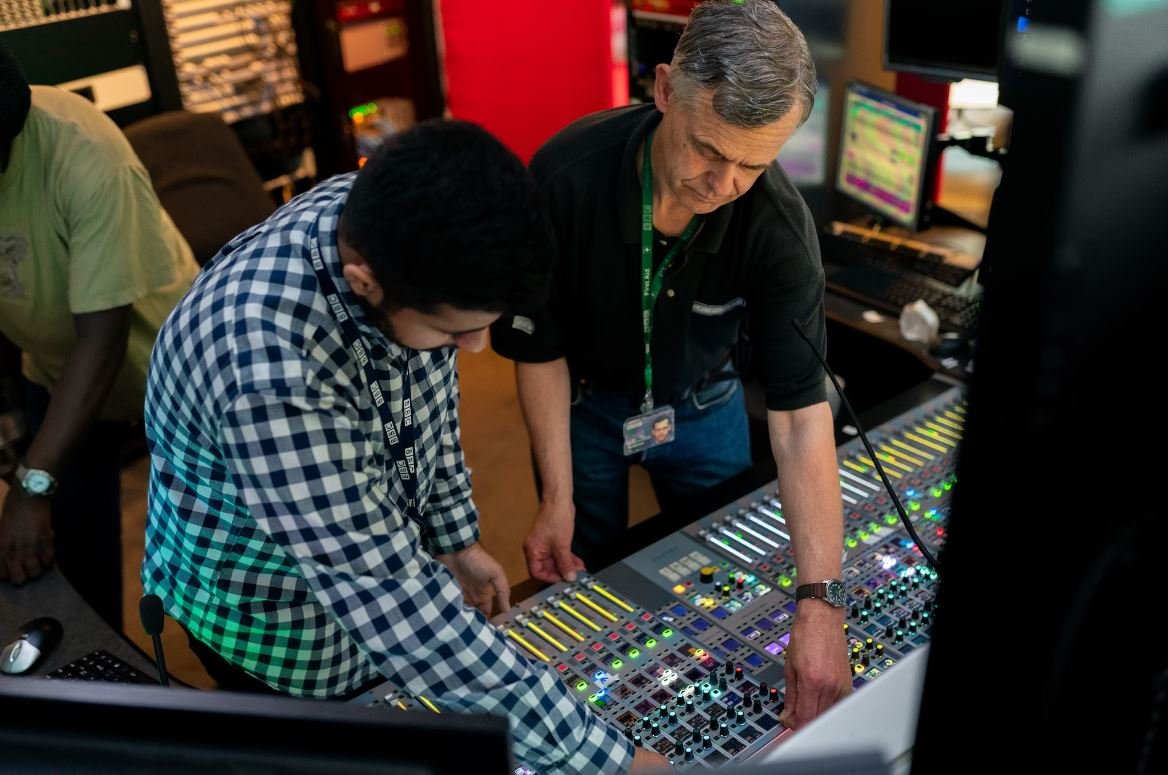Film vs. Theatre
Both film and theatre are popular forms of entertainment that have captivated audiences for decades. While they share some similarities, such as storytelling and the use of actors, there are distinct differences between the two mediums. Understanding these differences can help audiences appreciate and enjoy both film and theatre experiences to the fullest.
Key Takeaways:
- Film and theatre are both forms of entertainment but have distinct differences.
- Film offers a visual experience with the ability to incorporate special effects and multiple angles.
- Theatre provides a live performance with a unique atmosphere and direct interaction between actors and the audience.
Film, also known as cinema, is a medium that captures moving images on a screen utilizing a combination of visuals, sounds, and storytelling techniques. It allows for intricate editing, special effects, and the portrayal of various perspectives through the use of multiple camera angles. **With the advancement of technology, filmmakers continue to push the boundaries of creativity and deliver visually stunning experiences.**
Theatre, on the other hand, relies on live performances and the immediate connection between actors and the audience. Theatrical productions take place in a physical setting, such as a stage, and often make use of props, costumes, and lighting to enhance the storytelling. **The absence of retakes and editing makes each performance unique and adds an element of spontaneity that can captivate audiences in a special way.**
Comparing Film and Theatre:
| Aspect | Film | Theatre |
|---|---|---|
| Visual Experience | Offers a highly visual experience with the use of advanced camera techniques and special effects. | Relies on live performances and visual elements created through stage design, lighting, and props. |
| Editing | Allows for editing and post-production to enhance the storytelling and create seamless transitions. | No editing is possible, making each performance unique with no room for retakes. |
One of the key advantages of film is the ability to create visually spectacular scenes and incorporate special effects that transport audiences to imaginary worlds. *The combination of visual effects and storytelling in films can immerse viewers in a way that is unparalleled in theatre.*
Theatre, on the other hand, relies on the immediate interaction between actors and the audience, *creating a sense of shared experience and a direct emotional connection.* The live element of theatre also means that each performance is unique, contributing to the excitement and unpredictability of the experience.
Notable Differences:
- Film can be easily reproduced and distributed to a wide audience, reaching global viewership.
- Theatre, being a live performance, has a limited audience capacity and relies on local attendance.
- Film allows for intricate editing, while theatre offers real-time performances with no retakes.
Infographic: Film vs. Theatre
| Aspect | Film | Theatre |
|---|---|---|
| Visual Experience | Offers highly visual experiences with advanced camera techniques and special effects. | Relies on live performances and visual elements created through stage design, lighting, and props. |
| Editing | Allows for editing and post-production to enhance storytelling and create seamless transitions. | No editing is possible, making each performance unique with no room for retakes. |
In conclusion, film and theatre are both valuable forms of entertainment that offer unique experiences. **While film allows for breathtaking visual effects and editing that can be reproduced and distributed globally, theatre thrives on live performances and the immediate connection between actors and the audience.** It is through appreciation of their distinct characteristics that we can fully enjoy the diverse world of storytelling.

Common Misconceptions
1. Film and Theatre Have Similar Production Processes
One common misconception is that the production processes in film and theatre are similar. While both involve storytelling and performance, the way they are executed is quite different. Here are some key differences:
- Film involves shooting scenes out of order, while theatre performances are done in real-time, in chronological order
- In film, multiple takes can be done until the director is satisfied, whereas in theatre, performances usually happen in one continuous take
- The pre-production process for film involves location scouting, casting, and extensive planning, while theatre productions typically rely more on stage design and live rehearsals
2. Film is More Glamorous Than Theatre
Another misconception is that film is more glamorous than theatre. While film may have a larger audience reach and more notable celebrities, the theatre world also has its own unique charm. Consider the following points:
- Theatre allows for a more intimate connection between performers and audience members, fostering a sense of community
- The instantaneous reaction of a live audience can create an electric atmosphere for actors on stage
- Theatre often offers more diverse roles and opportunities for actors to showcase their versatility and range
3. Film Performances are Easier Than Theatre Performances
Many people assume that acting in films is easier than performing in theatre due to the ability to do multiple takes and edit scenes. However, this is not necessarily true. Here are a few reasons why:
- Actors must perform in a naturalistic style on film, whereas theatre acting may involve more physicality and projecting to reach a larger audience
- The quick turnaround time in film sometimes requires actors to learn and deliver lines on short notice, whereas theatre actors have months to prepare for a performance
- On film sets, actors must often perform scenes out of order and adjust to various shooting angles, while theatre actors have the benefit of performing the story in a linear fashion
4. Theatre is Old-fashioned and Irrelevant
Some people mistakenly believe that theatre is outdated and irrelevant in the age of technology and online entertainment. However, theatre continues to be a thriving art form with its own identity. Consider the following:
- Theatre offers a unique and immersive experience that cannot be replicated by watching a screen
- The live aspect of theatre makes it inherently different from recorded media and adds an element of spontaneity and excitement
- Theatre provides a platform for experimental and avant-garde performances that push the boundaries of storytelling
5. Film and Theatre Are Mutually Exclusive
Some people mistakenly view film and theatre as mutually exclusive, believing that actors must choose one medium over the other. However, this is not the case. Many actors successfully navigate both film and theatre careers simultaneously. Consider the following:
- Actors can find opportunities in both film and theatre industries, as they each have their own casting processes and demands
- Some actors use their theatre experience to enhance their film performances, bringing a unique stage presence to their onscreen roles
- Actors may choose to alternate between film and theatre projects based on their personal interests and artistic goals

Film Budgets in Comparison
One of the distinguishing factors between film and theatre is the budget involved. The table below provides a comparison of the average budget for a film production and a theatre production.
| Film | Theatre | |
|---|---|---|
| Production Budget | $100 million | $5 million |
| Marketing Budget | $50 million | $500,000 |
| Total Budget | $150 million | $5.5 million |
Revenue Generated
The revenue generated by film and theatre productions can vary significantly. This table showcases the global box office revenue of the highest-grossing film and the highest-grossing theatre production of all time.
| Highest-Grossing Film | Highest-Grossing Theatre Production | |
|---|---|---|
| Revenue | $2.79 billion | $6.2 billion |
Audience Reach
Film and theatre productions have distinct methods of reaching their audience. The following table compares the audience reach of a blockbuster film and a popular theatre play.
| Blockbuster Film | Popular Theatre Play | |
|---|---|---|
| Number of Theatres | 4,500 | 50 |
| Estimated Audience | 100 million+ | 300,000+ |
Technology Utilized
Advancements in technology have a profound impact on both film and theatre productions. This table highlights the technology used in each medium.
| Film | Theatre | |
|---|---|---|
| Cameras | High-definition digital cameras | None (reliant on stage lighting) |
| Special Effects | CGI, practical effects | Props, lighting |
| Projection Technology | IMAX, 3D | None |
Acting Requirements
The demands placed on actors in film and theatre vary significantly. This table outlines the differences in acting requirements.
| Film | Theatre | |
|---|---|---|
| Multiple Takes | Common | Rare |
| Stage Presence | Less emphasized | Crucial |
| Physical Stamina | Varies by role | High |
Creative Control
The level of creative control differs between film and theatre. This table compares the influence of various roles in each medium.
| Film | Theatre | |
|---|---|---|
| Director | High | High |
| Producer | High | Medium |
| Playwright | Low | High |
Production Time
The time it takes to produce a film or a theatre play can differ significantly. The following table illustrates the average production time for each medium.
| Film | Theatre | |
|---|---|---|
| Pre-production | 4-6 months | 3-6 months |
| Shooting/Rehearsals | 2-6 months | 4-6 weeks |
| Post-production | 3-12 months | N/A |
Critics’ Influence
The opinions of critics can significantly impact the reception of a film or a theatre production. This table compares the influence of critics in each medium.
| Film | Theatre | |
|---|---|---|
| Rotten Tomatoes Rating | 93% | 86% |
| Live Performance Reviews | N/A | Essential |
Ticket Pricing
The cost of attending a film or a theatre production can differ significantly. This table provides a comparison of average ticket prices.
| Film | Theatre | |
|---|---|---|
| Standard Ticket Price | $12 | $40 |
| Premium Tickets (e.g., IMAX) | $20 | N/A |
As we can see from the data presented above, film and theatre differ in various aspects such as budget, revenue generated, technology utilization, acting requirements, creative control, production time, critics’ influence, and ticket pricing. Film productions often involve higher budgets and a wider audience reach, while theatre productions emphasize stage presence and physical stamina. Directors and producers hold significant creative control in both mediums, though the influence of playwrights is more prominent in theatre. Additionally, while film often relies on critics’ reviews, theatre heavily depends on live performance reviews. Understanding these differences provides insight into the unique characteristics and challenges of both film and theatre.
Frequently Asked Questions
What are the main differences between film and theatre?
Film and theatre are two different forms of storytelling, but they differ significantly. While film is a recorded medium that allows multiple takes, editing, and various camera angles, theatre is a live performance that happens in real-time with no retakes.
Can you provide examples of film and theatre?
Some famous examples of film include “The Godfather,” “Titanic,” and “The Shawshank Redemption.” Well-known theatre plays include “Romeo and Juliet” by William Shakespeare and “Death of a Salesman” by Arthur Miller.
What are the advantages of film over theatre?
Film offers advantages such as the ability to incorporate visual effects, elaborate sets, and close-ups, allowing for more intimate character portrayals. Additionally, film can reach a wider audience through distribution. As it is recorded, film also allows for greater precision during editing.
What are the advantages of theatre over film?
Theatre provides a unique experience as it happens live, allowing for an immediate connection between performers and audience. It also offers the chance for actors to explore their characters in a continuous and uninterrupted performance, providing a different kind of authenticity.
Does film have higher production costs compared to theatre?
Generally, film production costs tend to be higher than theatre productions due to the expenses associated with equipment, special effects, post-production, and marketing. Theatre, on the other hand, may require fewer resources as it relies on live performances and does not require extensive post-production work.
Which form of storytelling requires more rehearsal?
Theatre typically requires more rehearsal time compared to film since theatre performances are live and uninterrupted. Actors need to be well-practiced, memorized, and ready to perform their roles flawlessly in front of a live audience, which requires extensive rehearsal ahead of time.
Is there more creative freedom in film or theatre?
Both film and theatre offer creative freedom, but they differ in nature. Film provides the opportunity for extensive visual storytelling, using various camera techniques and effects to enhance the story. In contrast, theatre places more emphasis on the performers and their ability to captivate the audience through live acting.
Can a play be adapted into a film or vice versa?
Yes, many plays have been adapted into films, and vice versa. The adaptation process requires modifications to suit the new medium while retaining the essence of the original story. Some examples of successful adaptations include “Les Misérables,” “A Streetcar Named Desire,” and “Chicago.”
Are there notable differences in audience interaction between film and theatre?
Yes, audience interaction differs significantly between film and theatre. In theatre, the audience can react and respond to the performance by applauding, laughing, or even participating in the play. On the other hand, film audiences typically watch the movie silently, without directly interacting with performers or other viewers.
Can film actors perform on stage, and vice versa?
Many film actors have successfully transitioned to the stage, and vice versa. However, the two mediums require different techniques and skills. Stage actors must adjust to a live performance environment, projecting their voices and physical movements to reach the audience. Film actors often need to adapt their acting style for the screen, where subtlety and nuance can be more significant.




